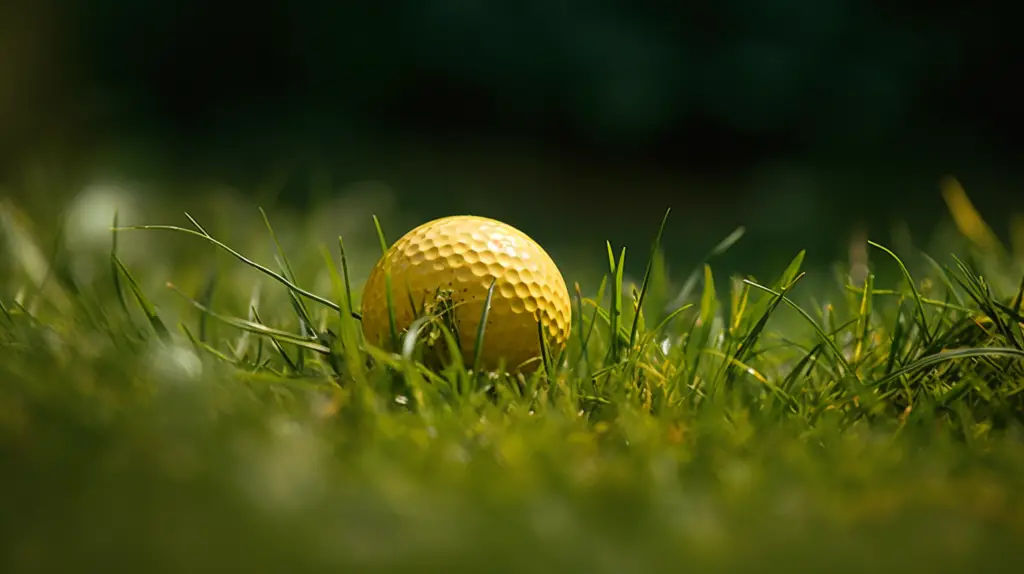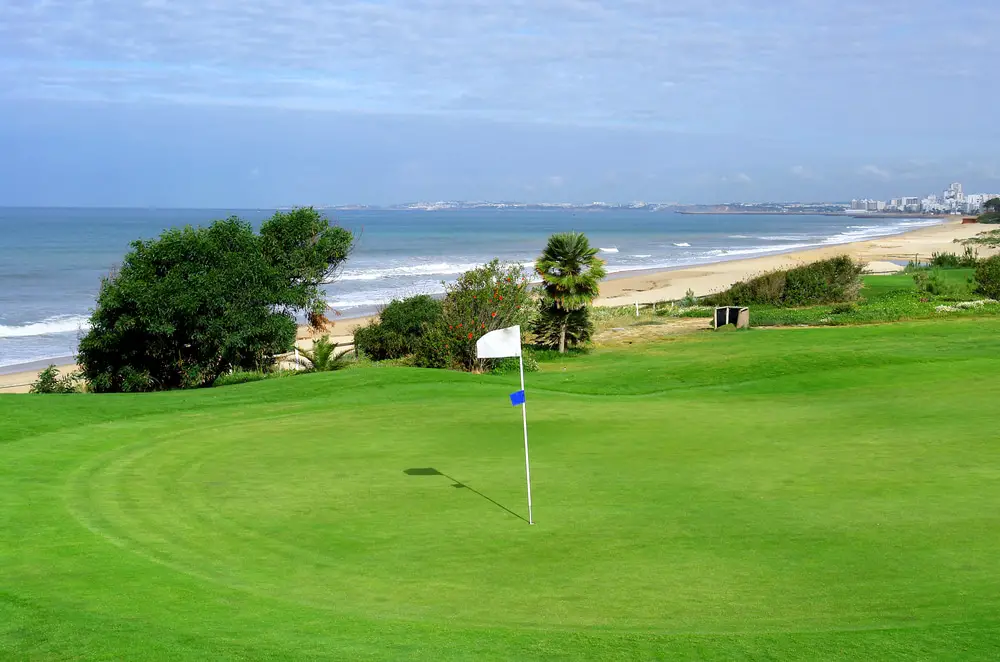Last Updated on November 2, 2023
Are you an avid golfer looking to up your game? Have you ever thought about using yellow golf balls but weren’t sure when it was appropriate to do so? Well, we’re here to help! In this article, we’ll give you some tips on when to use yellow golf balls and discuss why they can be beneficial. Read on to find out more!
Benefits of Using Yellow Golf Balls
Using yellow golf balls can provide players with a variety of advantages. In particular, they are more visible than other coloured golf balls and help to improve accuracy. This is because the bright colour stands out against the green grass, making it easier for players to keep track of their shots. Additionally, since yellow golf balls are typically made from high-performance materials, they offer enhanced distance and control during play.
Yellow golf balls also have great visibility when playing in different light conditions, such as dusk or foggy weather. Whether you’re playing on a course at night or early morning hours, yellow golf balls will make tracking your ball much simpler and more convenient. Overall, these benefits make them an ideal choice for all golfers who want improved performance and better visibility while on the course.
Appropriate Conditions for Using a Yellow Ball

Using a yellow golf ball can be beneficial in certain conditions. The best time and place to use one is when the weather is overcast, making it difficult for players to see their ball without good contrast against the background vegetation or sky. Yellow balls are also well-suited for night play, as they are more visible than white balls under artificial lighting. Players should also consider using them on courses with dense foliage; since yellow stands out better against green, this will help them find their ball faster.
In terms of performance, most experts agree that there’s no significant difference between playing with a yellow ball versus any other type of golf ball. All balls must meet USGA specifications regardless of colouration. Therefore, the choice ultimately boils down to personal preference or environmental factors. It’s important to remember that whatever colour you choose, make sure your equipment meets the necessary standards and regulations for tournament play if you plan on competing professionally.
Selecting the Right Type for You
When selecting a yellow golf ball, there are a few things to consider. Here are the pros and cons of each type:
- Yellow Urethane Balls – These balls offer more spin around the green due to their softer construction. They also provide excellent distance off the tee but have less durability than other types of balls.
- Surlyn Yellow Golf Balls – Surlyn offers good resiliency for longer shots with maximum speed off the driver and increased aerodynamics in flight. However, they don’t offer as much feel or control as urethane balls do.
- Bismuth/Titanium Core/Cover Balls – Bismuth core/cover balls give an explosive launch from any clubface that produces extremely long distances with very low spin rates on full swings. However, these balls tend to be quite expensive for amateur golfers.
- Magnesium Composite Core/Cover Balls – Magnesium composite core/cover balls produce great distance and accuracy while providing exceptional softness when striking the ball with irons, wedges, and putters. The downside is that they lack some of the precision found in urethane models.
No matter what you decide, make sure it’s suited to your game and will help you perform at your best on the course. Choose wisely!
Skills Required to Use a Yellow Ball

The use of a yellow golf ball requires certain skills. When choosing the right yellow ball, it’s important to consider its construction and how it will react in various weather conditions. You’ll also want to familiarise yourself with usage techniques for your specific type of yellow ball. Once you’ve done this, you can begin learning the benefits of using a yellow ball on the course. Practising with your new equipment is essential if you intend to get the most out of it. This means spending time at the driving range and understanding exactly what kind of shots are possible with a yellow ball. With enough practice, you’ll be able to take advantage of all that a yellow golf ball has to offer.
It’s worth noting that learning how to play better golf isn’t just about having the right equipment – it takes dedication and commitment too. That said, owning and using a high-quality yellow golf ball certainly won’t hurt your game!
Frequently Asked Questions
Is a Yellow Golf Ball Better for Short or Long Range Shots?
For short-range shots, a yellow golf ball may be preferable in some cases due to its brightness and visibility. This can help players line up their shots more accurately than with standard white balls, resulting in better shots overall. On the other hand, when playing long-range shots such as from off-the-tee box, yellow golf balls might not perform as well since they tend to fly shorter distances due to less spin imparted on them by the club head. That said, there are still advantages that come with using yellow balls for longer-range drives, namely improved accuracy compared to traditional white ones.
What Colour Golf Ball Should I Use in Low Light Conditions?
When it comes to playing golf in low-light conditions, choosing the right colour of the ball can make a huge difference. Yellow golf balls are often considered for their visibility range, cost comparison and tournament legality; however, there is some debate as to whether this is actually the best option:
Firstly, yellow golf balls tend to be more visible than white ones due to their bright colour; they also stand out on visual aids such as scorecards or course maps. Additionally, yellow golf balls are usually cheaper than other coloured options. Lastly, most tournaments allow players to use them without penalty, whereas other colours may not be legal.
Nevertheless, there are still several drawbacks when using yellow golf balls in low-light conditions. Here is a list of 4 main disadvantages:
- They do not travel as far as white or striped balls because they lack spin control
- The extra weight of the ball reduces its accuracy and makes it difficult to manoeuvre around obstacles
- The brightness can cause glare which detracts from player performance
- Players with poor vision may struggle even more when trying to track the ball flight trajectory during dusk/night hours
These factors should all be taken into consideration before deciding if yellow golf balls are suitable for your needs in low-light situations. Ultimately, individual preference and skill level will determine what type of ball works best, but understanding the pros and cons will help you make an informed choice.
Are Yellow Golf Balls Legal for Tournament Play?
When it comes to tournament play, one important factor to consider is the legal status of yellow golf balls. While tournaments usually require players to use white or bright-coloured balls for better visibility in low-light conditions, some may allow the use of yellow golf balls as well. However, since they don’t adhere as closely to USGA regulations, other tournaments may not recognize them as official equipment during competitive rounds.
Conclusion
In conclusion, there are a few things to consider when choosing whether or not to use yellow golf balls. They may be slightly more expensive than traditional white balls, but they can definitely help you in terms of visibility and accuracy on the course. Yellow golf balls are great for short-range shots since their bright colour makes them easier to find among other players’ shots. When it comes to long-range shots, however, some people prefer white golf balls because they don’t stand out as much against the backdrop of green grass. In low-light conditions, yellow is probably the best choice due to its higher visibility.
Finally, make sure you check with your tournament’s rules before using a yellow ball – while many tournaments allow them, some do not. Ultimately, if you’re looking for an edge in visibility and performance on the course, then yellow golf balls might be just what you need!


